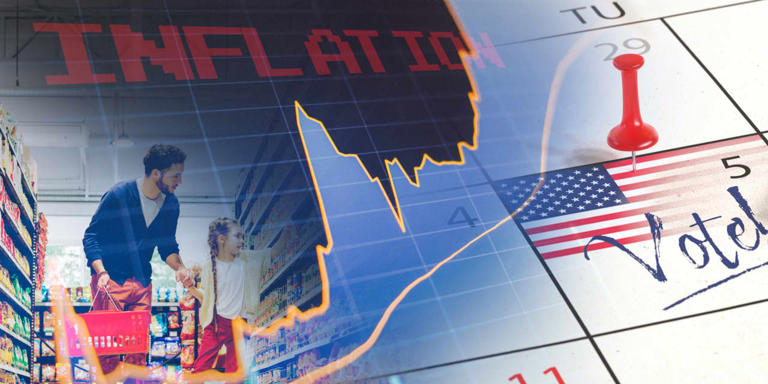The anticipation surrounding the upcoming consumer-price index (CPI) report for June is intensifying the ongoing debate among investors and analysts about the future trajectory of U.S. inflation. On one hand, there is optimism that inflation will continue to cool, which would give the Federal Reserve the flexibility to consider cutting interest rates. On the other hand, the potential re-election of Donald Trump is raising concerns about renewed inflationary pressures due to his proposed trade and immigration policies.
Recently, major U.S. stock indexes, including the S&P 500 and Nasdaq Composite, reached new highs despite a recent rise in Treasury yields. This market performance reflects mixed sentiments about the economic outlook. Economists are predicting a decline in the annual headline CPI inflation rate to 3.1% in June from 3.3% in May. Moreover, there is an expectation among inflation traders that the rate could continue to drop toward 2% by May 2025. This suggests that a slowing U.S. economy might allow the Federal Reserve to cut interest rates as early as September.
However, the prospect of a Trump presidency introduces significant uncertainty into these projections. Trump’s proposed policies, particularly those involving trade and immigration, are seen as potential catalysts for inflation. He has suggested imposing 10% tariffs on all imports and a minimum 60% tariff on Chinese goods. These measures are expected to trigger retaliatory actions from other countries, potentially escalating into a trade war. Jan Hatzius, the chief economist at Goldman Sachs, has warned that such tariffs could add 1.1 percentage points to U.S. inflation and result in five additional quarter-point rate hikes by the Federal Reserve.
In addition to trade policies, Trump’s stance on immigration could also have a substantial impact on inflation. Trump has advocated for stricter immigration controls and the mass deportation of undocumented workers. Steven Zeng, a strategist at Deutsche Bank, noted that increased immigration has historically helped the Fed keep interest rates lower by alleviating labor market pressures. A reversal of this trend could lead to higher wage inflation and a more hawkish Federal Reserve.
Federal Reserve Chairman Jerome Powell is navigating these complex dynamics with caution. During his recent testimony before Congress, Powell avoided making direct comments on Trump’s policies. Instead, he focused on the broader context of inflation, highlighting the role of supply and demand shocks following the reopening of the U.S. economy after the COVID-19 pandemic. Powell’s approach underscores the Fed’s primary focus on managing inflation and ensuring economic stability while acknowledging the political uncertainties that could influence future economic forecasts.
The outcome of the November 5 presidential election could significantly alter the economic outlook and the Fed’s policy direction. Trump’s proposals have already generated concerns in parts of the financial market, as evidenced by the recent rise in Treasury yields. Gang Hu, an inflation trader at WinShore Capital Partners, emphasized that the election could fundamentally change the inflation picture for the next three to four years, making it a crucial factor for the Fed to consider.
As investors closely monitor these developments, the Federal Reserve faces the challenging task of balancing current inflation data with future uncertainties. This balancing act is crucial as policymakers aim to maintain credibility and clarity in their approach to managing the economy. Powell and his colleagues will need to tread carefully, weighing the immediate need for potential rate cuts against the longer-term risks posed by a possible shift in the political landscape. This delicate balancing act highlights the complexities of monetary policy in an environment marked by both economic and political uncertainties.
